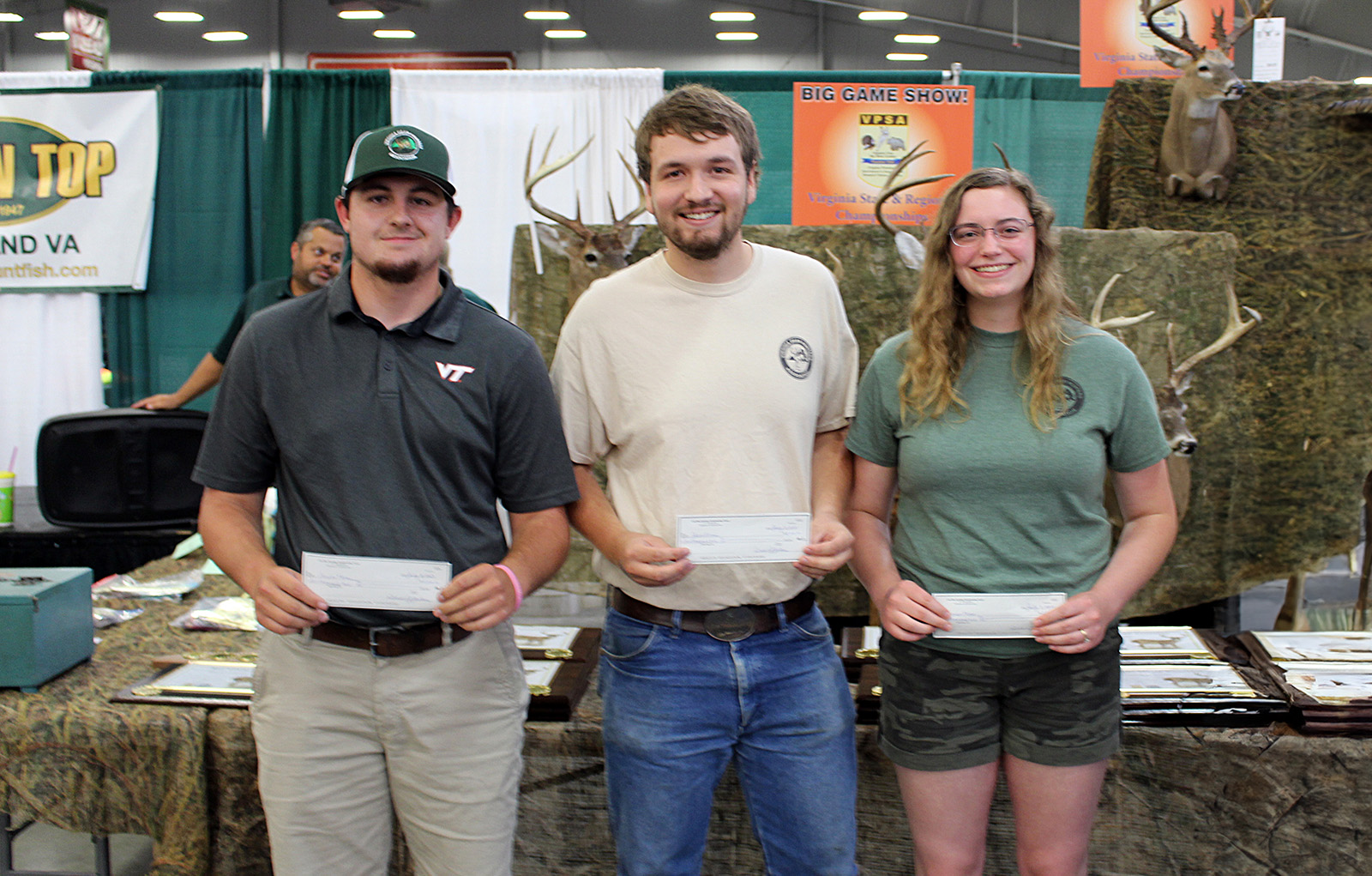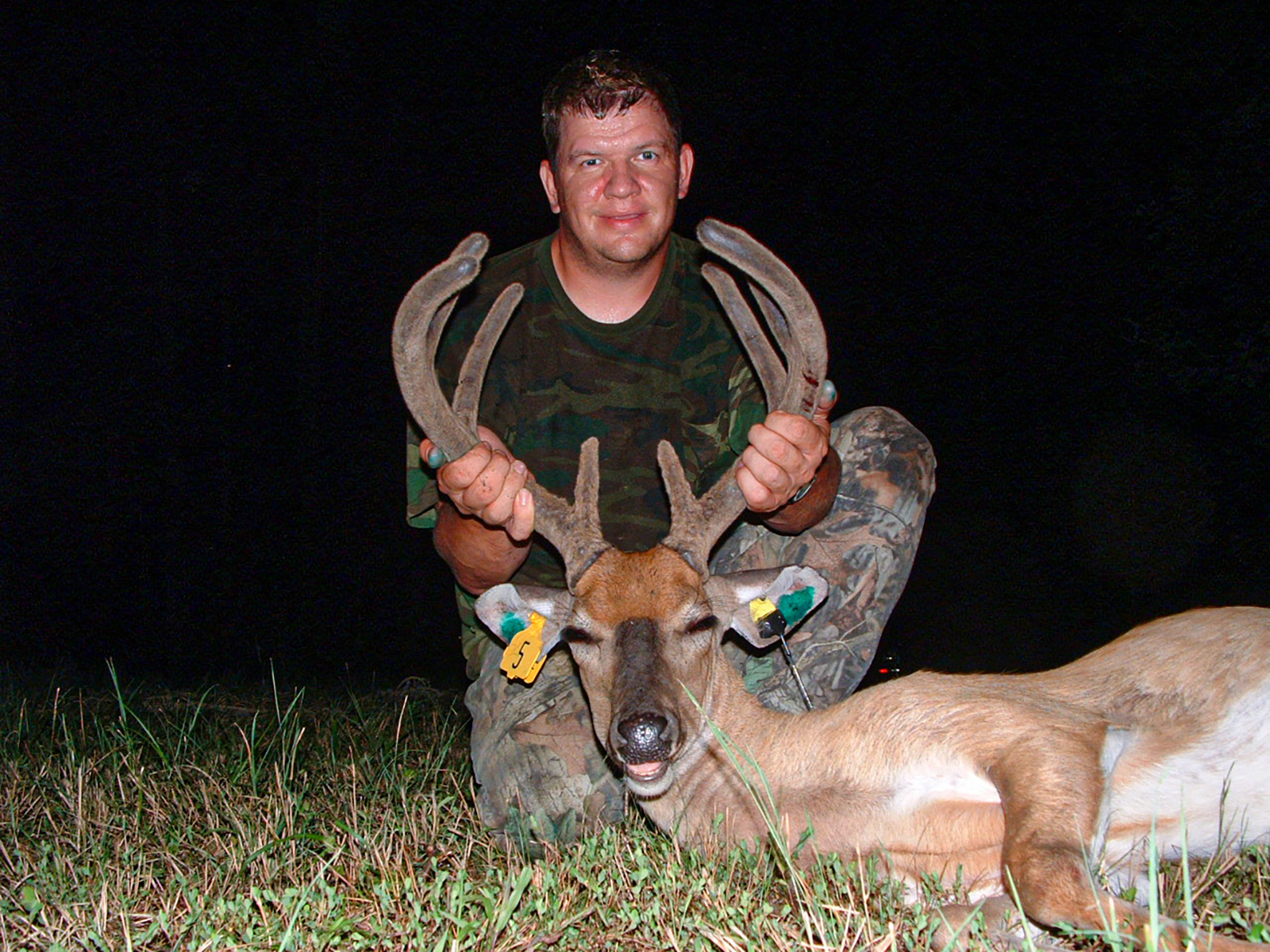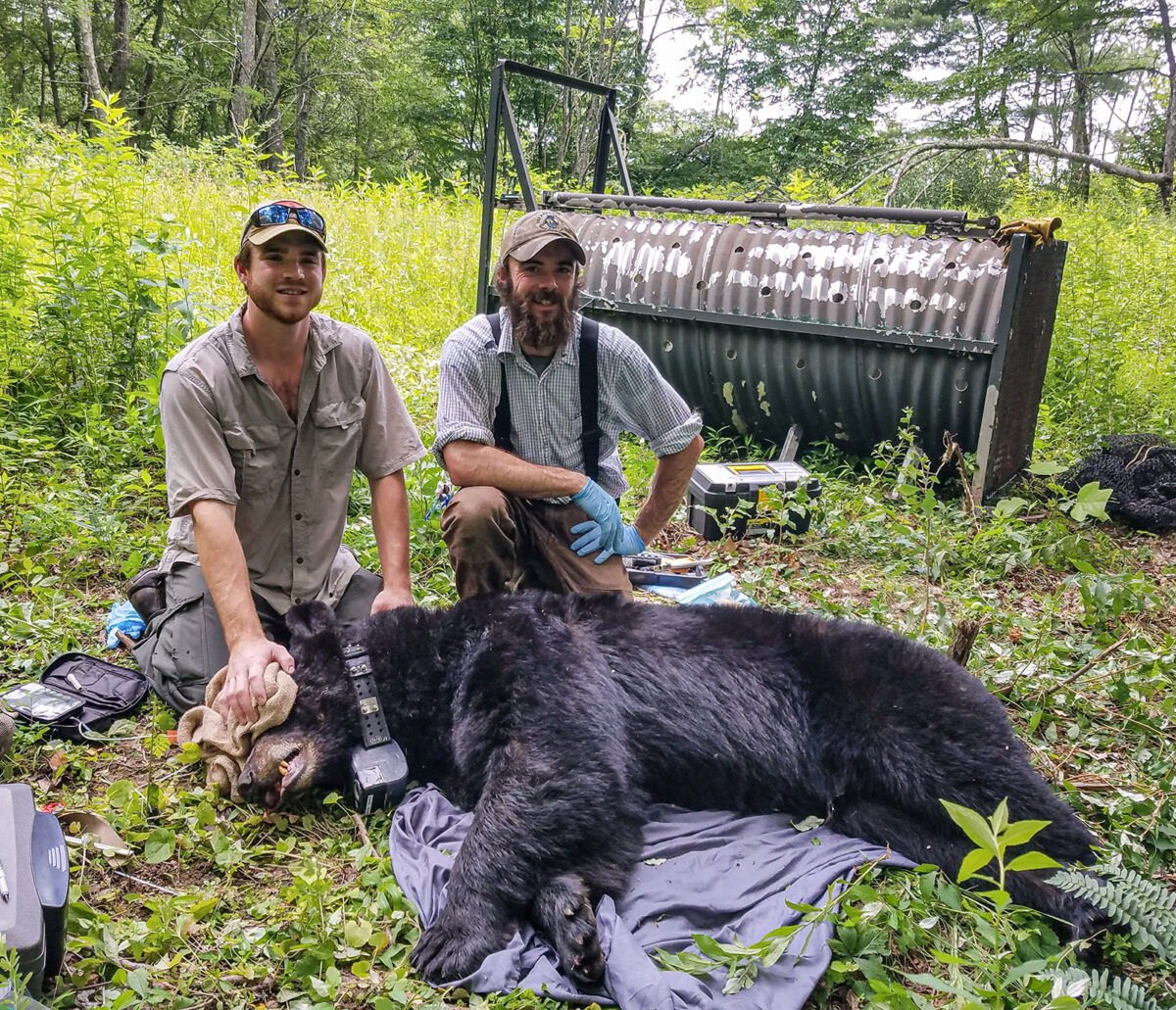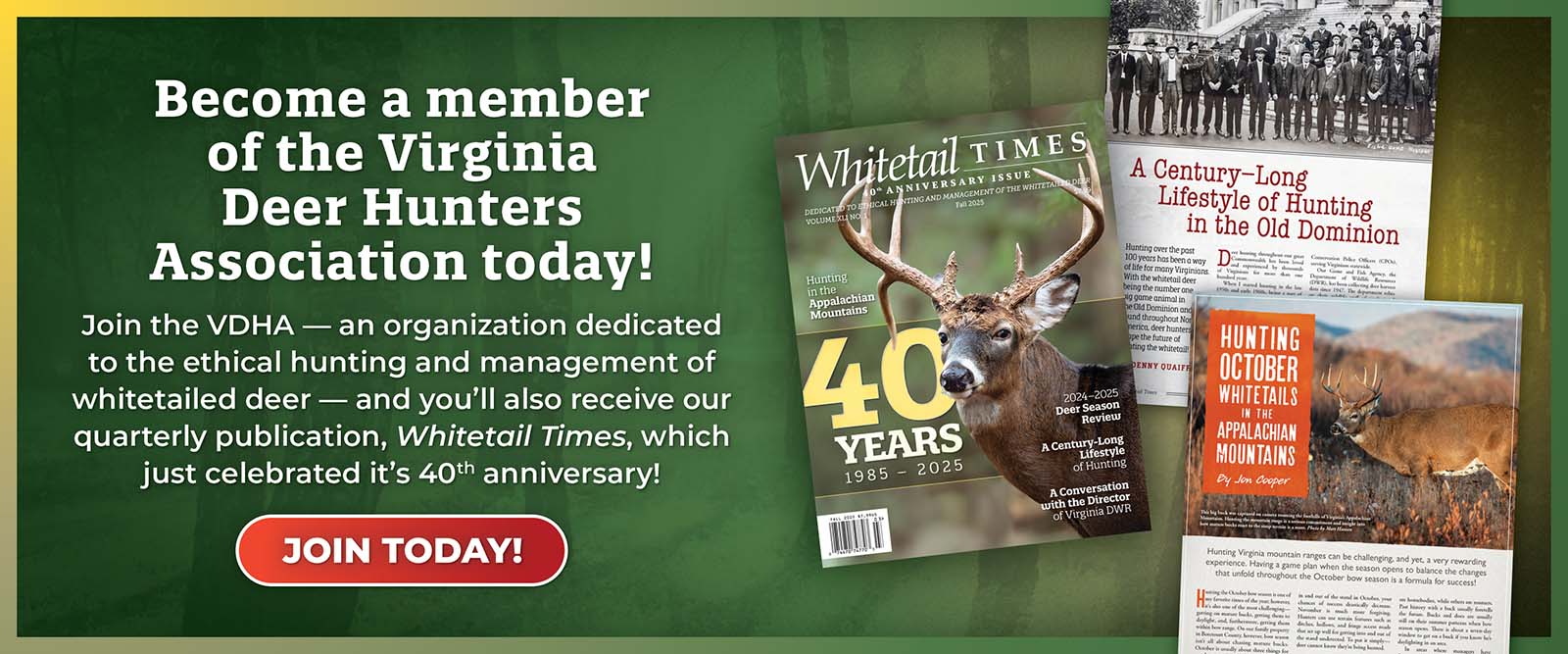By Denny Quaiff for Whitetail Times
The Virginia Deer Hunters Association (VDHA) Lee Roy Gordon Scholarship Grant was established in 1989. The late Lee Gordon, who was a charter member, helped to organize the corporate sponsor program that started funding for the scholarship awards. It was Gordon and our founding Board of Directors that recognized the need for continuing education and research. This support has stood the test of time and we are proud of our long-term commitment.
Today, Bob Duncan, Lee Walker, and I make up the scholarship committee. We review the applications and determine how the awards will be presented. This is a commitment that we take very seriously.
Voice of Our Scholarship Committee
Bob Duncan is the retired Executive Director of the Virginia Department of Wildlife Resources (DWR). I asked Bob, after 40 plus years as a certified wildlife biologist, what he could share with our readers that relates to future wildlife research and the role our VDHA scholarship grants play.
“The last decade has brought many changes and challenges to the future of wildlife conservation, and management will have a huge impact on wildlife populations and hunting. Climate change is one of the greatest threats to wildlife habitats, including severe drought, wildfires on an unprecedented scale, weather systems bringing more hurricanes, tornadoes and unprecedented flooding. Habitat loss via wildfires, like never experienced in our time, along with increasing wildlife diseases pose great threats to the future of wildlife resources and thus the future of hunting. For example, Epizootic Hemorrhagic Disease (EHD) and Chronic Wasting Disease (CWD) continue to present great challenges, currently and going forward,” Bob said. “These conditions underscore the need for wildlife research on a scale never realized, and the VDHA scholarship grants program will be even more critically important than ever before.”
Bob, with the different fields our scholarship recipients are majoring in, how do you feel our scholarship awards have benefited ongoing research studies linked to the white-tailed deer?
“The VDHA has done a superb job in providing funding for critically important wildlife research and the training of graduate researchers who are making tremendous contributions to addressing the issues we now face,” Bob replied. “VDHA’s Scholarship Grants Program has provided the training for outstanding graduates who have contributed greatly to addressing critical research needed in Virginia and beyond.
“The issues being addressed and contributions by each year’s crop of graduate students and their universities are critically important to our understanding of the challenges we collectively face going forward,” Bob continued. “VDHA-sponsored research has helped to unlock important information, not only on deer management, but also on much-needed specifics about predator species like coyotes and their impacts on deer. The currently funded project on black bear will likewise provide knowledge critical to understanding the wildlife population dynamics needed to be successful.”
Lee Walker, the retired Outreach Director with DWR, is usually first to have the applications process completed with positive comments. I asked Lee, after working with our scholarship committee, what he would like to tell our readers about our scholarship applicants and how these students stand out within their communities.
“It is very encouraging to see such a fine group of students who clearly exhibit the passion and knowledge to tackle future conservation challenges,” Lee said. “Love of family, the willingness to work hard, and doing as much for others as for themselves are just a few of the attributes that highlight this year’s scholarship recipients. Each student has displayed the ability to remain focused throughout their educational journey and the confidence to reach their goals.
“The biggest standout of each of these students is their enthusiasm to make positive biological changes that not only benefit wildlife but the critical habitat on which they rely on,” Lee continued.
Lee, if there is one significant thing that stands out in your mind about these outstanding students, it would be greatly appreciated for you to share this with us.
“It was very evident from their grades and academic achievements that each of these talented students have taken the initiative early on in life to actively volunteer their time and talents within their schools, local communities, and churches,” Lee noted. “They have also shown great potential for personal growth within their field of their studies and the ability to be effective leaders. As a lifelong member of the Virginia Deer Hunters Association, I am proud to have this opportunity to be part of an investment in these young professionals and in return helping to make a meaningful impact on the sport of deer hunting.”
The 2023 VDHA Scholarship Recipients
Brogan Holcombe has her Master’s degree in Wildlife Science and is currently working on her PhD. She headed up a project on black bears to document their daily activity with video cameras. The VDHA helped pay for these cameras to follow a technique that had not been used rigorously on wild animals.
Jesse Owens has his BS degree in Wildlife Science and is working on his Masters in Forestry. His professors speak highly of him and tell us, “Jesse is strong academically, organized, highly motivated, and hardworking.” His letters of recommendation tell us that Jesse is a leader, especially with his willingness to serve “above and beyond” what would be expected. We are proud of Jesse and pleased to award his scholarship grant.
Trevor Moore’s major study is Wildlife Conservation at Virginia Tech. He is enrolled in The College of Natural Resources and Environment at the University. He is the Ambassador of the College of Natural Resources and Environment. He is secretary of the National Deer Association Student Chapter and Merchandise Manager of the Bass Fishing team at Tech. We were satisfied that Trevor will make the most of his scholarship to advance his research and conservation efforts, a most worthy recipient.
Mariah Moss’s major schooling is Forest Resource Management. She attends Virginia Tech and studies at The College of Natural Resources and Environment (NRE). Mariah is another strong leader among our scholarship applicants. Professor Carolyn A. Copenheaver said, “If you have time while reviewing applications, you should check out Mariah’s explanation of tree-related microhabitats on the university’s YouTube channel.” She concluded by saying, “Mariah has a great future in the forestry profession.” We could plainly see her leadership skills and desire for learning was the criteria for a successful career.

The VDHA scholarship program continues to be a leader for continuing education and wildlife research. Pictured here are three of 2023’s four student recipients (left to right) Trevor Moore, Jessie Owens, and Moriah Moss. Photo by Lacey Sullivan
DWR Highlights Past Recipients
Nelson Lafon, forest wildlife program manager with DWR, has been so very helpful reaching out to the colleges and universities each year about our scholarship grant program. I asked Nelson to expand on how scholarship recipients have managed research projects that address concerns from the hunting community and the general public.
“There have been many students from various universities who have gotten VDHA scholarships working on projects of interest to DWR, hunters, and the public. I’ll just mention a few of these past students whose graduate research at Virginia Tech I was engaged with. Greg Batts, who now works for North Carolina Wildlife Resources Commission, examined how well the Quality Deer Management (QDM) program was working on a hunt club in Amelia County, Virginia, during 2003-2006. Besides showing just how successful the club’s QDM program was, one of his main findings was that, unless hunters move their stands and change their strategies occasionally, they’re likely to miss big bucks that are on the property but never encountered by anyone during the season. Also, Greg showed that hunters should adjust their expectations about the maximum buck and antler size a property can produce based on the quality of the soils and habitat in their area.

From 2003 to 2006, Greg Batts conducted a Quality Deer Management Study on a hunt club in western Amelia County, Virginia. Greg trapped and tagged 31 does and 20 bucks. Greg is pictured with one of the bucks that he and his professor, the late Mike Vaughn, caught on a hot summer night. Ear tag transmitters were attached to all the bucks, and telemetry tracking was conducted throughout the study to determine buck home ranges before, during, and following the rut. Photo courtesy of Greg Batts
“The next three recipients of the VDHA scholarship that I will mention addressed different aspects of predation on deer in western Virginia, specifically in the Bath and Rockingham County areas where sportsman had expressed the greatest concerns about long-term declines in deer numbers. Dana Morin, currently a professor of wildlife at Mississippi State University, conducted some of the first work on coyotes in Virginia during the 2010s in this area. In addition to just getting a better understanding of coyote ecology in the western mountains of Virginia, Dana and her colleagues sought to evaluate potential impacts of coyotes on game populations, particularly white-tailed deer in low productivity public lands.
“Robert Alonso followed Dana to examine potential impacts of more thoroughly—and the interactions between—the three carnivores in that ecosystem that may prey upon deer: coyotes, bobcats, and black bears Simultaneously, Garrett Clevinger, who now works as the deer project leader for the Tennessee Wildlife Resources Agency, conducted a two-pronged investigation of factors driving mountain deer populations (including predators, habitat, hunting) while also working on development of an un-baited trail camera deer survey method of potential use to managers of deer hunting properties.”

David McNitt (left) and Robert Alonso with a bear captured as part of the carnivore study in Bath County, VA. This study and several others in the mountains of Virginia were conducted by students that received scholarship grants from the Virginia Deer Hunters Association. Through the tireless work of these students many questions have been answered for the general public and the hunting community! Photo courtesy of Robert Alonso
Nelson, can you explain how these studies that follow wildlife and science have helped to benefit DWR?
“I’m not aware of any VDHA scholarship recipient’s research that didn’t in some way expand the body of knowledge about an important wildlife management topic. I’ll continue with the three students who investigated carnivores and deer in mountains of western Virginia, as an example.
“An important conclusion from Dana’s project was that, in order to truly understand how predation may be impacting deer in the mountains of Virginia, we needed a better idea how the three main predators (coyotes, bears, and bobcats) were working together as a ‘guild,’ Nelson continued. “This is where Robert’s project came in. He looked at the demographics, space use, and interactions among these three predators, including at deer carcasses, specifically. He found that bears, coyotes, and bobcats overlap each other so much in space use, diet, and daily activity patters that reducing the population of one predator in the system may have little to no impact on fawn survival. That’s because reducing one predator’s impacts might be compensated by increased fawn predation by the other predators.
“Fortunately, Garrett’s work with collared does and fawns concluded that combined predation was not preventing deer populations in Bath County from growing. Although fawn survival was lower than in many studies—and predation (especially from bears) was the most significant fawn mortality factor—his model suggested that the deer population across his three study areas was stable to growing. Taken together, these studies should allay some of our fears about predators.
“If good habitat can be provided, and adult doe harvest can be kept in balance with that habitat, predation should rarely be a limiting factor for white-tailed deer—a species that evolved with much more effective predators than we have now. Habitat is the canvas on which all the rest of this picture is being painted,” Nelson concluded.
Nelson, based on all of the changes you have experienced throughout your professional career as a wildlife biologist, what role do you see these students playing in the future of wildlife management?
“From what I’ve seen, the students who receive a VDHA scholarship award are of the caliber to make a difference, no matter what they do,” Nelson replied. “I have no doubt they will be successful taking the baton from those of us who have worked our careers in this field. With their scientific knowledge and can-do attitudes, this next generation of wildlife managers will address challenges we haven’t even identified. Just look at these folks who I’ve mentioned already: they’re leading the management of deer and other wildlife resources in several states and teaching and researching at leading wildlife universities, furthering their own knowledge and experience every day and passing it forward to others. They’re living the cycle, and pushing it forward, so I couldn’t be prouder of them!”
Conclusion
Since 1996, when Ben West became the first recipient, 32 students have followed and received VDHA Scholarship grants.This notable outreach program has raised over $350,000 to benefit wildlife along with equipment used for the research. This has been made possible by generous donations from our corporate sponsors, charitable trust gifts and support from the Camp-Younts Foundation and Wildlife Foundation of Virginia.
Continuing to follow the journey of wildlife has never been more important than it is today. With all the changes that have taken place that effect the white-tailed deer, it would be impossible to know what the future holds without ongoing education and research!
©Virginia Deer Hunters Association. For attribution information and reprint rights, contact Denny Quaiff, Executive Director, VDHA.


